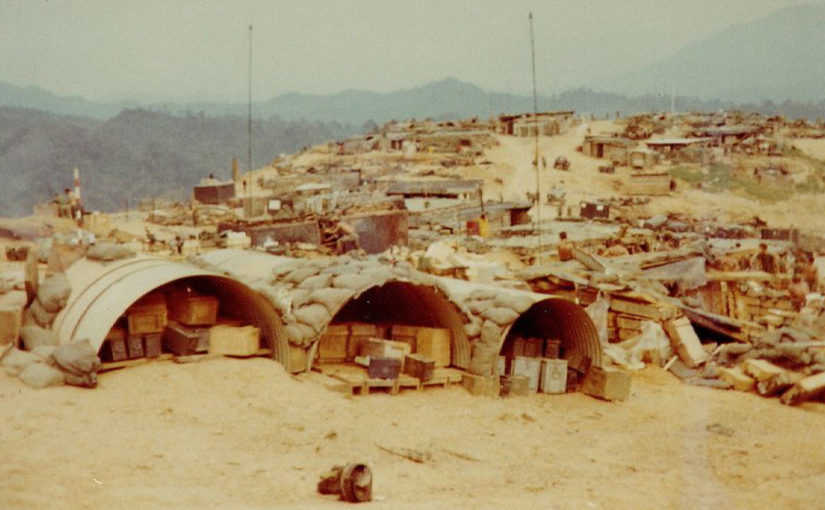Every school-child knows about General Custer and how he was surrounded and engaged with the Indians and eventually perished. Few Americans know about any other battles where American took great causalities and losses. That is because the American news media is a propaganda machine. And in it, American NEVER lose wars, battles or suffers defeat. America is the unstoppable army filled with Rambo's. It's not true. And people should stop believing this lie. War is a dangerous activity and the tables and tides can turn in a moment's notice. Here we look at one of the numerous defeats that the American military suffered at the hands of a small group of "primitives" in a "third world shithole" in Vietnam. There's lessons galore to the reader who wants to learn a thing or two...
I strongly believe that everyone should study history. Not the names of people, places and things. No. But rather the stories of those who have lived in trying times, and under unique situations. We should learn from their tales; learn the lessons that they can offer us, and apply them to our own lives.
We know now…
We know now, that the Vietnam war never should have happened.
With President Trump declassifying the President Kennedy Assassination documents, we can see how frighteningly easy it was for the Military / political leadership and “deep state” to murder him. And, as soon as he was dead and gone, the new President Lyndon B. Johnson drove America into war.
Oh yes.
The documents now released by the government clearly show how President Kennedy was assassinated. Eight shooters were involved, and the entire military, CIA, political staff, and “deep state” were all involved. All the details regarding the shooting teams, the radio frequencies used, the body-doubles, the switches, and the handlers, are all well documented and very clear in excruciating detail. We know everyone’s names… that is excluding those still alive and working in Washington D.C.. We know just about everything.
Oh…
Sorry to burst your bubble.
Yes, I remember.
We fought “Communism”, we fought against the “Domino Theory“. We fought for “liberty” and Democracy”. At least that was what the Mainstream media poured into our collective minds. When in reality, we were starting the military-industrial engine, that would grow to become an uncontrollable global monster.
And…
We allowed it to happen.
From the death of President Kennedy, until way into my High School years, we were bombarded with news about how “we were winning the war in Vietnam“. We all believed it. Whether it was Johnson speaking, or Nixon. It was the same narrative. Happy times! War is good for the just causes and we were winning!
All bullshit.
We weren’t winning anything. In the end, Vietnam collapsed and turned communist and the only people who won were the members of the military-industrial complex that funded that war.
It was a different kind of war…
For the first time in American history, the Industrial-military complex, aligned with the “deep state” took control of the nation. As such it began fighting wars.
Wars…
Wars…
Wars…
Wars everywhere, and wars with no exit strategy. The idea was not to solve problems, resolve conflicts or provide global stability for American interests.
The goals were to become a mechanism for profit.

Instead of ending wars in a brief but nasty period of time… two years, three years or four years. The wars became “open ended” and were driven as profit mechanisms.
This did not sit well with the bulk of the American citizenry. They wanted, what all citizens want; happiness, liberty and freedom and accountability. But that is not what they got. And instead they watched the news report daily on the death and carnage as fellow Americans died in rice paddy’s as expensive jets bombed mud huts and killed water buffalo.
Most people reading this will have NEVER experienced a single year without America fighting some kind of war.
A simple discussion.
We are not going to cover the crimes inherent in this.
Instead, we are going to look at the war from the perspective of an individual fighting “in the trenches” in a far away land. While the fat cats in Washington, D.C. and in the walnut and mahogany lined walls of industry drank their cocktails and counted their stacks of Benjamins, it was the “average Joe” that had to do the dirty work.
Here is one such story.
There are many lessons to be learned here, so please sit back and pay attention.
The article is titled " VC Overrun Fire Support Base Mary Ann". It was written on December 30, 2013 , by pdoggbiker and found on the Vietnam War Website. All credit to the author, and everything else. I was in elementary and middle school during this entire debacle, and I have a lot of respect for those that came before and fought and died alongside their friends and comrades. Please give this masterful piece of work the respect that it deserves.
VC Overrun Fire Support Base Mary Ann
Date March 28, 1971 Location 15°18′20″N 108°6′37″ECoordinates: 15°18′20″N 108°6′37″E Quang Tin province, South Vietnam MGRS AS 962-998 Result Viet Cong victory
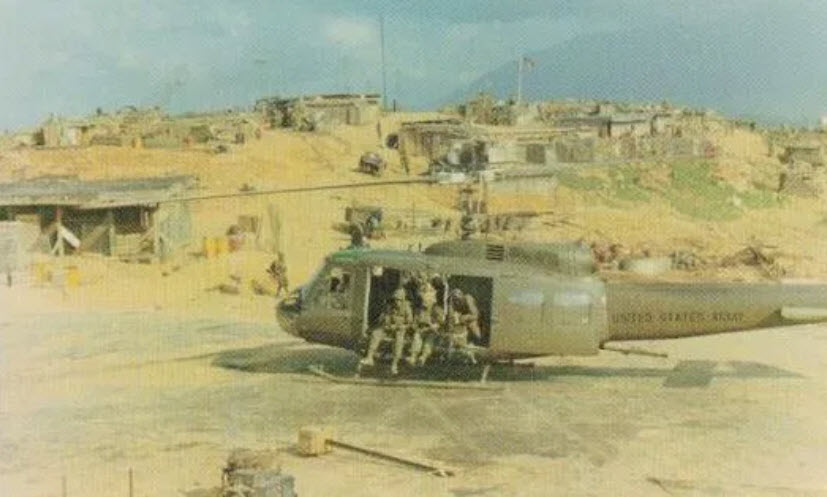
In March of 1971, the 25th Infantry Division was packing it up and leaving Vietnam.
Those of us not having nine months in country were reassigned to other units within the country; I went to the 101st Airborne Division with many of my friends, others I knew, went to the Americal Division near Chu Lai…
…some flew out to FSB Mary Ann temporarily until a permanent home can be determined.
This deadly attack occurred on their second night there!
SHTF! Boom! Boom! Small arms fire…
Running down the hallway of the battalion tactical operations center (TOC), Captain Paul S. Spilberg charged into a cloud of tear gas just as he reached the commander’s quarters.
Staggering blindly back the way he had come, Spilberg made it to the north exit, crawled up the stairs and out the door into the fresh but bullet-ridden air. Forcing his eyes to focus, the shaken captain was stunned to hear the fire of AK-47s and the crash of rocket-propelled grenades from inside the base’s perimeter. In amazement he watched as numerous small figures darted catlike among the spreading flames. Everywhere he looked he saw the scurrying silhouettes, who were enemy sappers feeding the chain of explosions devouring Fire Support Base Mary Ann on that afternoon in 1971.
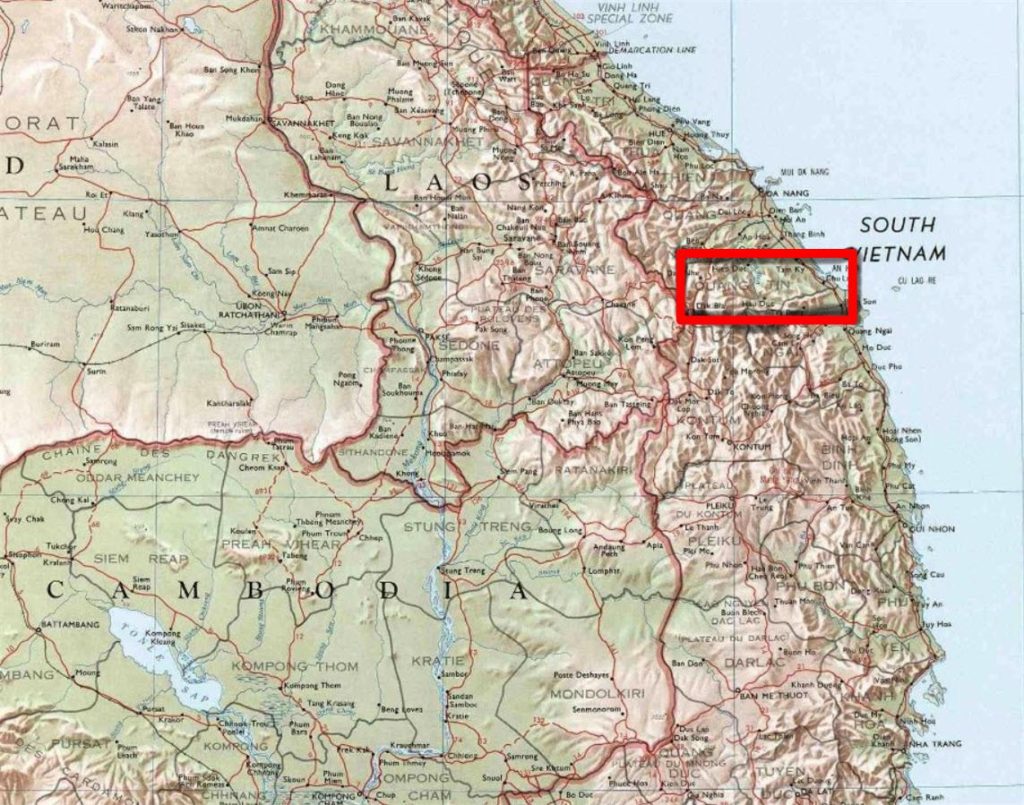
This is the story of the 23rd Infantry Division “Americal” 1st Battalion, 46th Infantry Regiment2nd ARVN DivisionBattery B, 22nd Field Artillery , against Military Region 5409th VC Main Force Sapper Battalion .

Four days earlier.
Four days before the fatal attack, Spilberg had arrived at the FSB by helicopter. He was an old hand there, having previously served at Mary Ann as a company commander.
Along with three assistants, he now had returned as a marksmanship instructor. His team had established a training course using targets on a crude rifle range set up on the FSB’s southwest slope.
The hill was garrisoned by Company C, 1st Battalion, 46th Infantry (1-46), 196th Light Infantry Brigade, assigned to the 23rd ‘Americal’ Infantry Division.
The battalion commander, Lt. Col. William P. Doyle, was a serious professional.
Along with the Company C commander, Captain Richard V. Knight, Doyle had molded this handful of reluctant draftees into one of the better combat units still in the field in 1971.
Mary Ann was in a generally quiet sector, and the soldiers atop the hill had come to regard their outpost as something of a rear echelon area rather than what it actually was — the division’s most forward firebase.

It starts.
Three hours later the American firebase was rocked from within by a series of powerful explosions. Spilberg was asleep deep inside the TOC.
The structure was a sturdily reinforced, half-buried bunker, and from its interior Spilberg initially had a hard time recognizing the muffled crashes. Thinking the base was taking mortar fire, he rolled off his cot and began pulling on his boots and shirt.
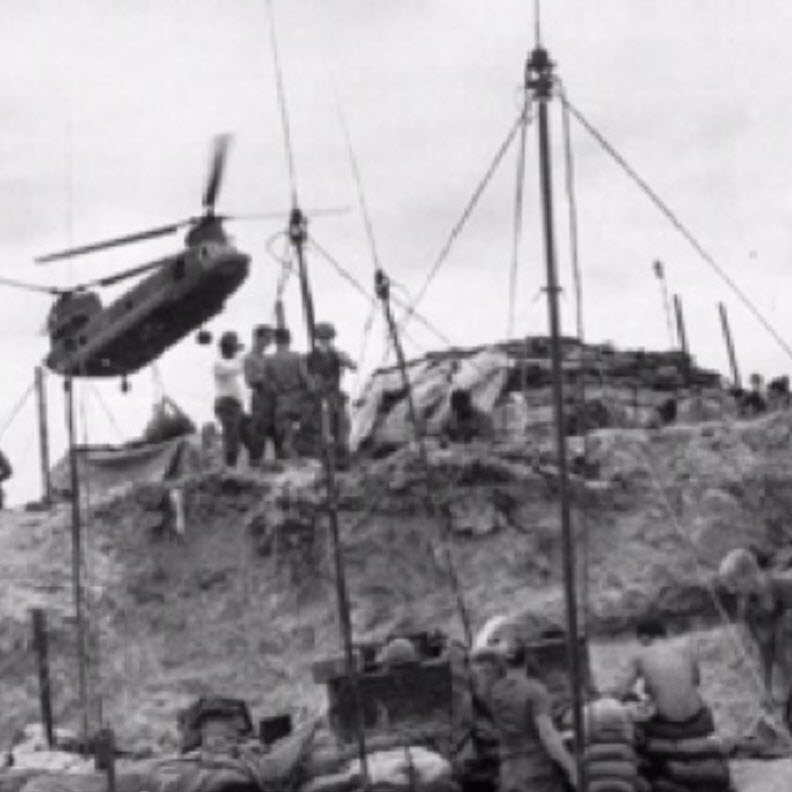
Before leaving the bunker, he grabbed his .45-caliber pistol from under his pillow.
Hindsight; earlier that day.
On the afternoon of March 27, 1971, after the soldiers had completed their target practice, the three officers remained on the shooting range. They plinked with various weapons and talked awhile, and then Doyle and Knight headed for the mess tent.
Spilberg remained behind to take a few more shots. He had only the base’s mascot dog for company.
The mongrel suddenly bristled and began barking and growling at something downslope that Spilberg could not locate. He had never seen the amiable mutt behave like that, but try as he might he could not detect what was agitating the animal.
Finally deciding the dog must have scented a tiger or cobra, Spilberg set out after the other officers.
Much later he related: ‘I never said anything to Doyle about that dog being on alert, but I should have known. It bothered me for years and years. It was my second tour. I should have known.’

Sappers storm the base.
One of the sappers had thrown tear gas into the TOC officers’ quarters, and Colonel Doyle was trying desperately to escape his gas-filled room.
As he struggled to unlatch the plywood door, a satchel charge detonated in the hallway, blowing the door from its hinges and flattening him. Picking himself up, he turned toward the door and faced a sapper wearing nothing but bush shorts, a gas mask and a full-body coating of camouflage.
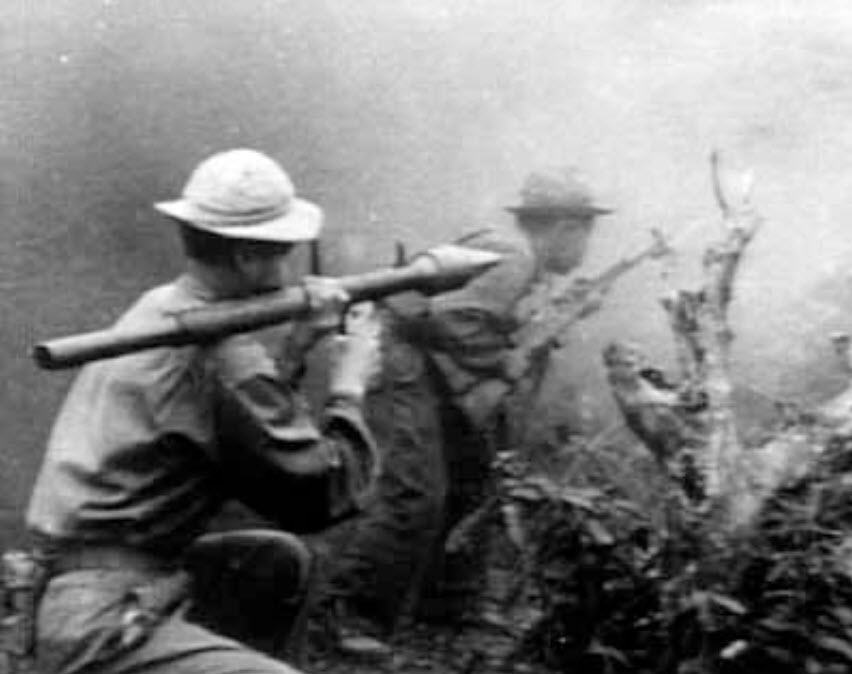
When the Communist drew back to hurl another satchel charge, Doyle raised his own .45 and shot him square in the chest. As the man fell backward the bomb went off, blowing him to bits and flattening Doyle a second time. Three more charges exploded in the hall before Doyle was able to dig through the rubble and leave the bunker.
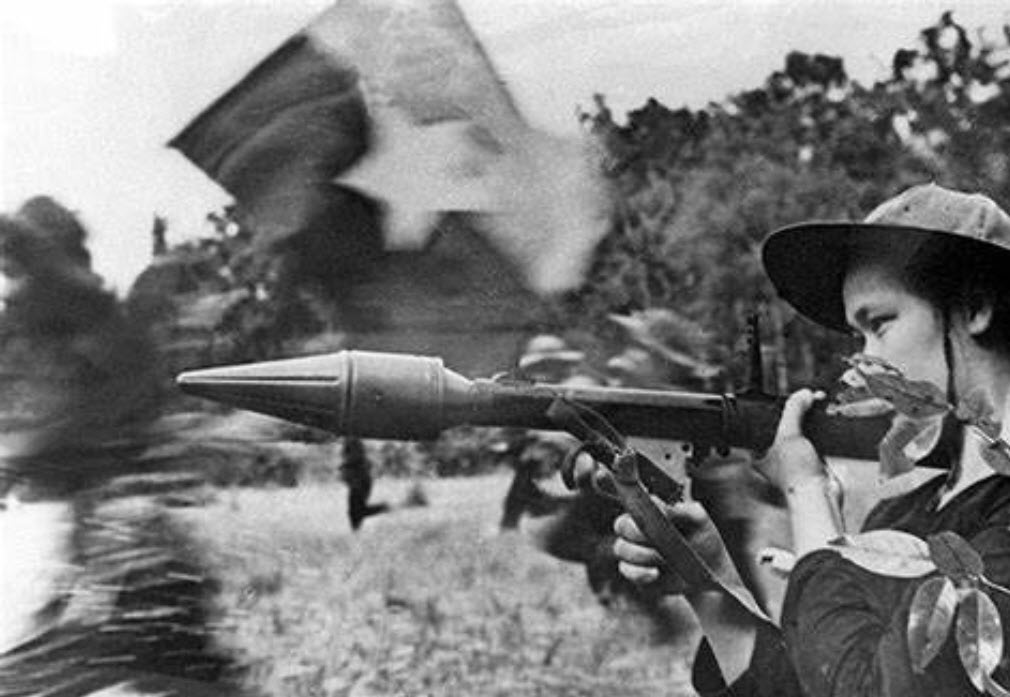
By then he was bleeding from fragmentation wounds in one leg and both arms. He was unable to hear through his blood-filled ears, and could barely see through gas-seared eyes.
For 45 minutes, the infiltrators sprinted throughout the firebase, expertly planting their charges among the frantic, befuddled Americans. As the assault concluded, the TOC was a towering pyre.
Spilberg picked up a damaged M-16 he found on the ground. Wincing from three grenade fragments in his back, he made for Knight’s company command post to see if the captain had survived.
The CP was a bonfire and beginning to collapse. As he reached the crumbling entrance, Spilberg could hear ammunition exploding in the flames. He peered inside but saw only a blazing vision of hell. Somewhere within that inferno, Knight lay dead.

The company CP and battalion TOC had been the primary targets for the brilliantly executed sapper assault, and Knight was one of 30 Americans killed. On the morning of March 28, Doyle and Spilberg were among the 82 wounded GIs evacuated.
The first indicator that something bad was afoot had come on the night of March 25-26. Lieutenant Scott Bell was on patrol, on what was supposed to be his last night on the hill.
As he squinted into the surrounding silent, mist-cloaked jungle, he sensed an almost tangible uneasiness in the air, and felt a primordial sense of dread that motivated him to organize one last big rat kill before his departure. Maybe that would keep his men alert.
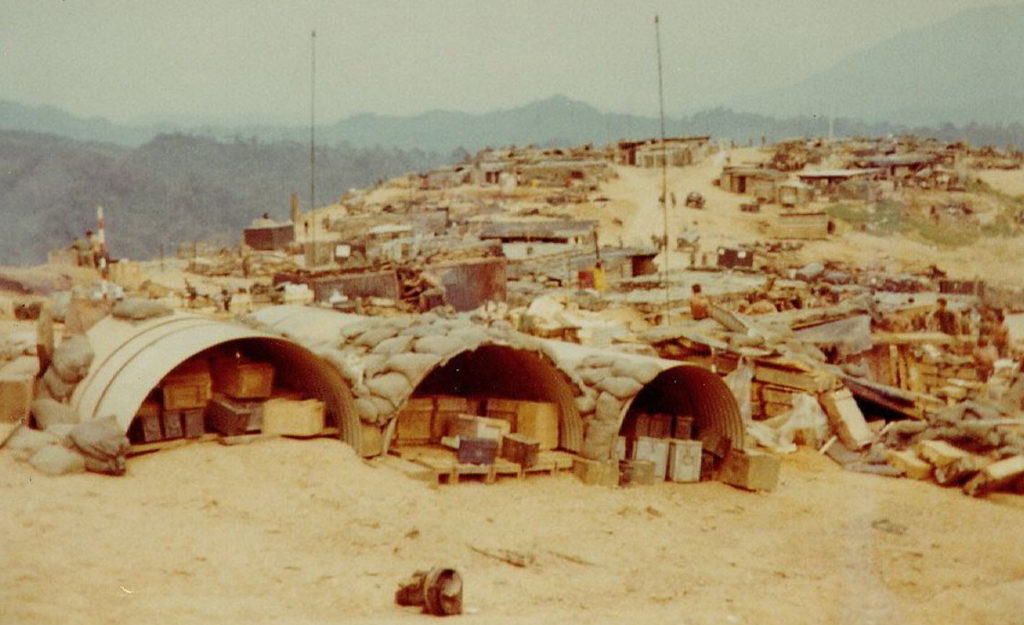
The last big rat kill.
The soldiers knew the drill.
They constructed ingenious rattraps from empty C-ration cans laced with cheese and blasting caps. All night the men counted miniature explosions as squirrel-sized Asian rats died in the competition between platoons.
By dawn there were 130 dead rodents laid out in neat lines in front of the CP. These were the last fireworks here for Bell and Company A.
The next morning they moved out and were replaced by Captain Knight and his Charlie Company, who were transferred in from Chu Lai.
Charlie Company settled into the new position and started policing the area in preparation for a visit from the brigade commander, Colonel William Hathaway, who had been unhappy with Company A on his last inspection.
Knight hurriedly set his men to work disposing of dead rats, marijuana cigarette butts, empty whiskey bottles and other such junk left behind by their predecessors. When Hathaway, accompanied by Doyle and Knight, walked the perimeter that afternoon, he was delighted with the improvement over what he had seen a week earlier.
Hathaway, however, did not inspect the tactical outer wire because, he later explained,’somewhere along the line you have to put the trust in the company commander.’
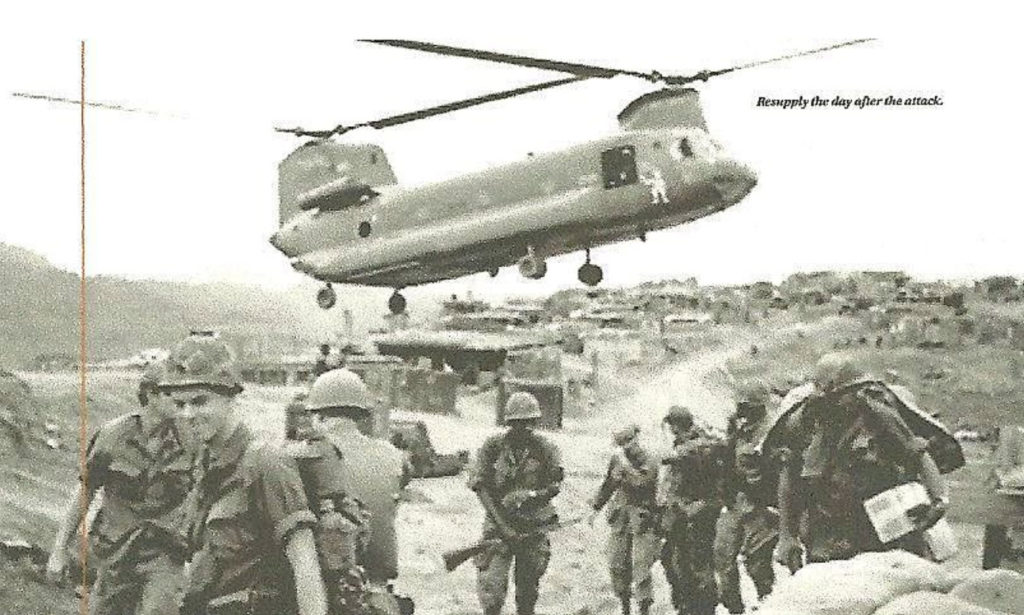
Additional trip flares were triggered by the prop blast of CH-47 helicopters as they landed at and took off from the FSB.
The Americans did not replace the flares.
In hindsight, Hathaway thought overconfidence might have been another factor contributing to the debacle.
Overconfidence.
‘Charlie Company, commanded by Captain Knight, was certainly the best company in that battalion, and probably one of the best companies in this division,’ Hathaway said later. ‘One of the problems was that they were so good they were a little contemptuous of the enemy.
They were the hunters, not the hunted.’
But the outer defenses were not in order.
As Lieutenant Jerry Sams, leader of C Company’s 2nd Platoon, later explained: ‘The sergeant major was on everybody’s ass about policing the area before the inspection, and they had my platoon out there picking paper off the wire.
Those helicopters would come in and kick up all kinds of crap.
I had to send the guys out two or three times, and it was one of those typical Army things where everybody’s bitching and raising hell. They were accidentally setting off trip flares in the wire — all our early warning devices that would have come in mighty handy later on that night.’

Another cause for the false sense of security was that there had been no signs of an impending attack. Major Alva V. Hardin, the 196th Infantry Brigade’s intelligence officer, later testified, ‘We had no intelligence to indicate there would be an attack on Mary Ann.’
Lack of Listening Posts.
The lack of listening posts outside the wire was another critical mistake. When Hathaway learned Doyle had not deployed LPs beyond the outer perimeter, he concurred. ‘Listening posts were not a policy,’ explained Hathaway.
‘I considered listening posts outside the wire a hazard. I considered the danger of people getting wounded, either by defensive fires or somebody getting excited and firing on the perimeter, to be greater than the necessity for the listening post.’
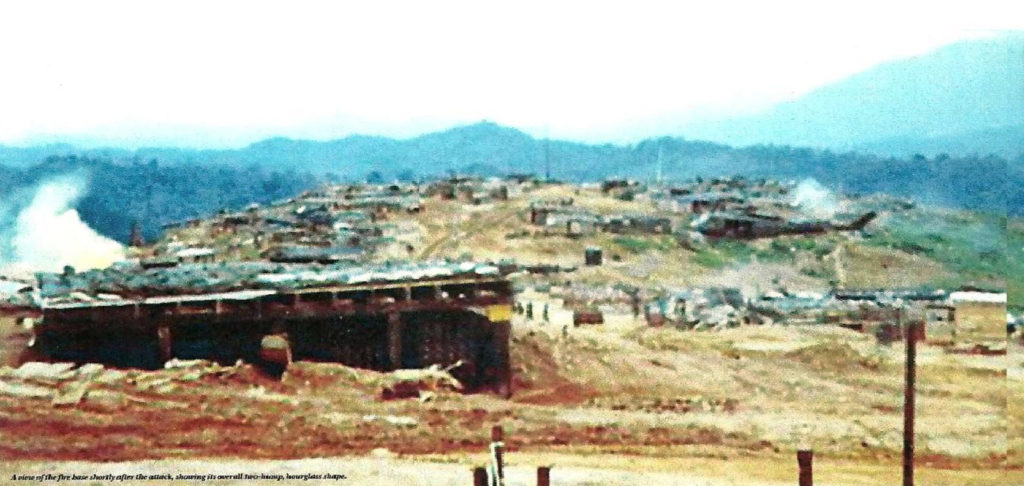
Mary Ann had been constructed on the bulldozed summit of a ridge running northwest to southeast.
In profile the elevation looked like the back of a camel, with the base stretching 500 meters across both humps. It was 75 meters wide between the humps, and 125 meters broad at each end. A continuous trench that was knee- to waist-deep and had 22 bunkers formed the perimeter.
Inside the perimeter were 30 buildings of various styles, giving the appearance of a shantytown. The whole thing was surrounded by two belts of concertina wire.
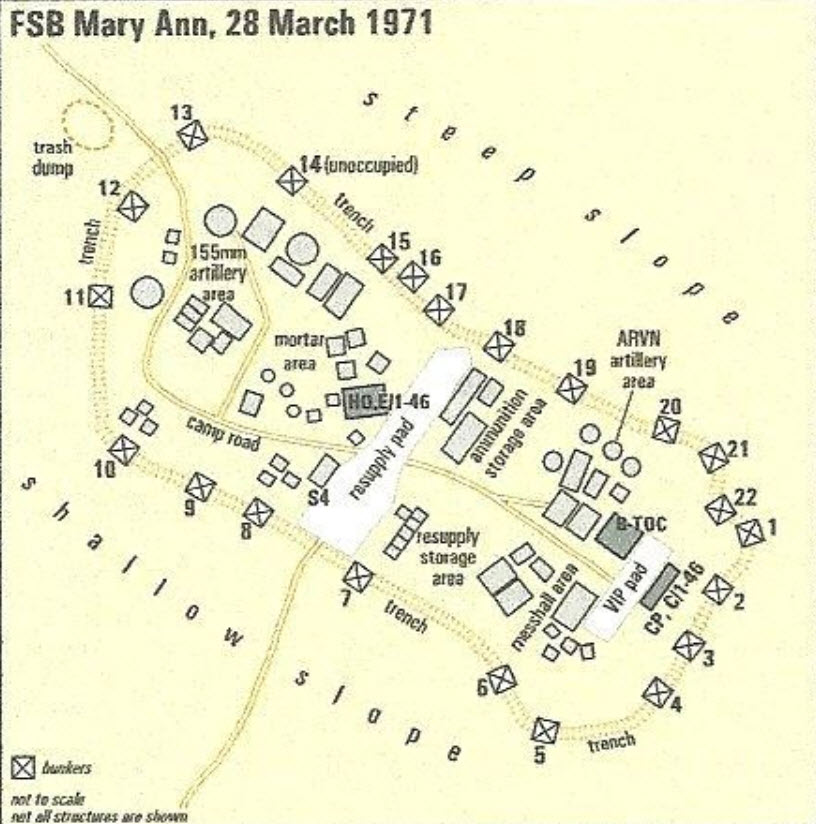
Two dirt roads interrupted the trench and wire line of the perimeter. Doyle had tried unsuccessfully to have chain-link fencing flown in to close the openings, but higher headquarters, noting that the base was soon to be turned over to the ARVN, decided against providing construction materials for the soldiers of South Vietnam.
The road openings remained.
Easing up the guard…
With the 196th Infantry Brigade already scheduled for redeployment to Da Nang, Doyle had ceased all construction projects within and around Mary Ann and had started packing for the move.
By March most of the base’s mortars and artillery had been airlifted to nearby LZ Mildred to fire on enemy positions in that sector. By March 27, all of Mary Ann’s starlight scopes and ground radars had been shipped to the rear for maintenance.
On the night of the attack, the infantry under Doyle at Mary Ann consisted of 231 Americans and 21 South Vietnamese, plus the battalion training team, battalion intelligence officer, the sergeant major, an interpreter and 22 transient soldiers from Companies A, B and D. The transient troops spending the night at the base were in no mood to remain on alert.
Specialist 4 Harold Wise was one of those who had just arrived. ‘Thirty percent of the guys on the hill were heads,’ he said later. ‘Marijuana, heroin, whatever you wanted. The guys in the sensor hooch next to the tactical operations center were potheads, and a lot of people congregated there to buy stuff, but unless they knew you, you didn’t come in.
They had locks on the door of their hooch.
Nobody did it in the open. It wasn’t brazen. If an officer saw somebody doing it, he’d bust the guy. Some of the officers and sergeants knew what was going on, but as long as you did your job, they didn’t say anything.’
The drug problem on the base, although not as pronounced as in other areas, was still sufficient to benefit the enemy.
Battery C, 3rd Battalion, 16th Field Artillery (155mm), was aligned in battery formation atop the base’s highest elevation. The infiltrators quickly destroyed both of the unit’s howitzers. Staff Sergeant Easton Rowell, the chief of the firing battery, was wounded six times. He later groused, ‘We took a screwin’ because the grunts on that hill were a bunch of potheads!’
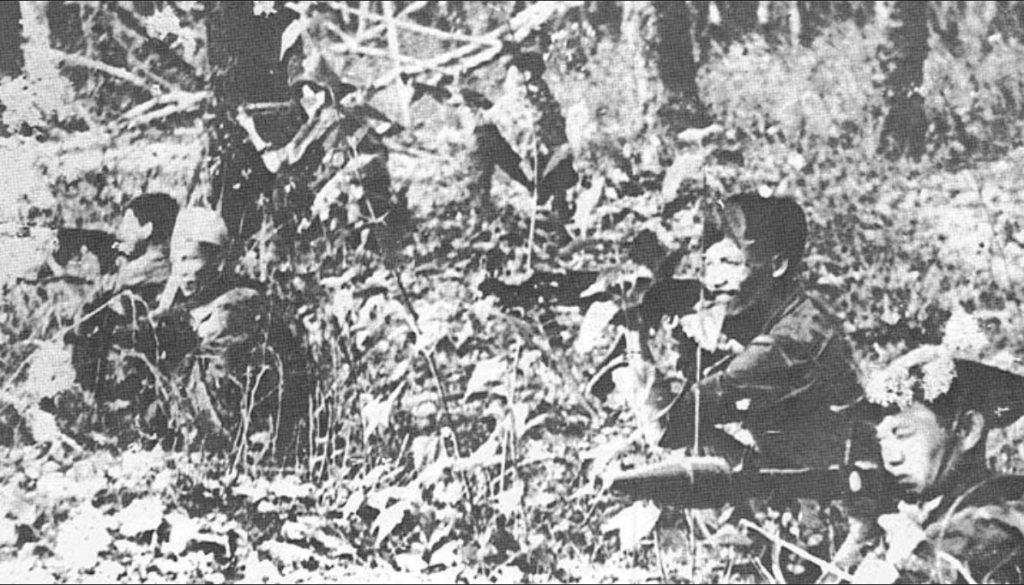
VC 409th Sapper Battalion
The attackers were from the Main Force VC 409th Sapper Battalion.
This unit was known for operating against the ARVN in Quang Nam province, and at that time was thought by out-of-date U.S. intelligence to be 15 to 20 kilometers east of Mary Ann, preparing for a major push against the South Vietnamese.
At 0200 hours on March 28, an American searchlight crew conducted a cursory 20-minute illumination sweep of the slope outside the exit to the firing range.
The hillside had been cleared of vegetation, but still was punctuated by boulders and tree stumps, all of which provided good hiding places for the small enemy. Seeing nothing unusual, the GIs shut down their light and headed for their bunker.
The explosions started 10 minutes later.
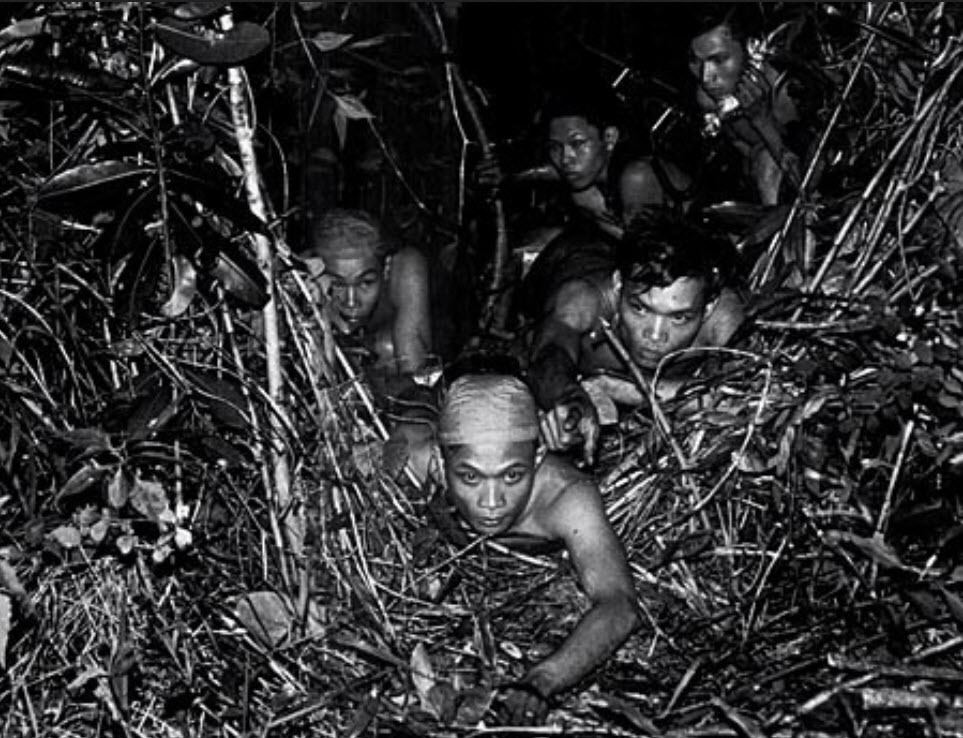
The 409th sappers were experts in their trade. With AK-47s strapped to their backs, grenades in their belts and satchel charges fastened to their chests, they wore nothing but khaki shorts and soot. They crawled silently, slowly and steadily through the jungle, using their fingertips as probes.
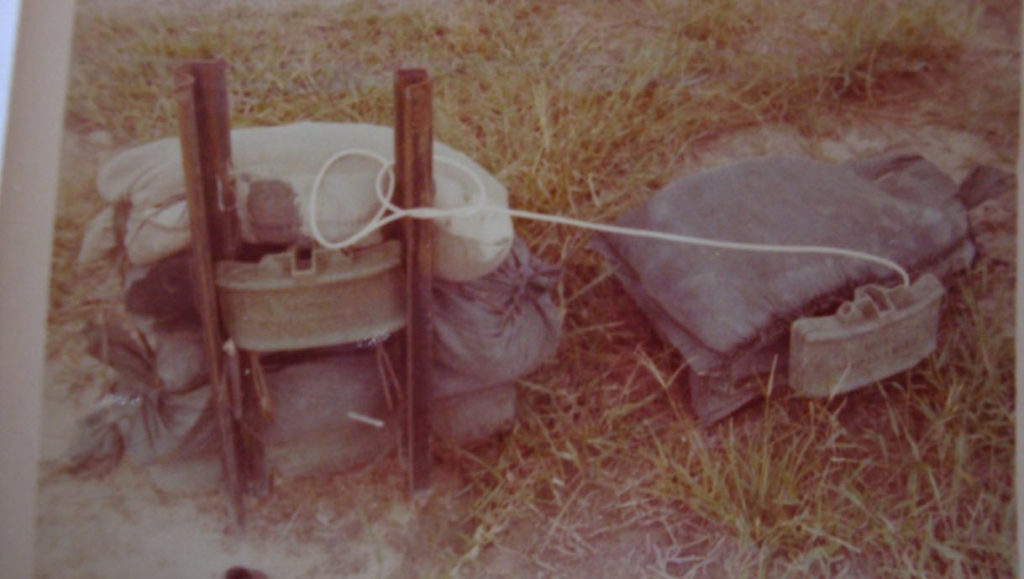
When they detected trip flares, they used lengths of bamboo, carried in their teeth, to tie down the strikers. When they felt wires leading to Claymore mines, they used wire cutters to cut the lines. They were careful to cut only two-thirds of the way through the strands of concertina, then used their fingers to break the rest of the way through the wire silently and without shaking the large coils.
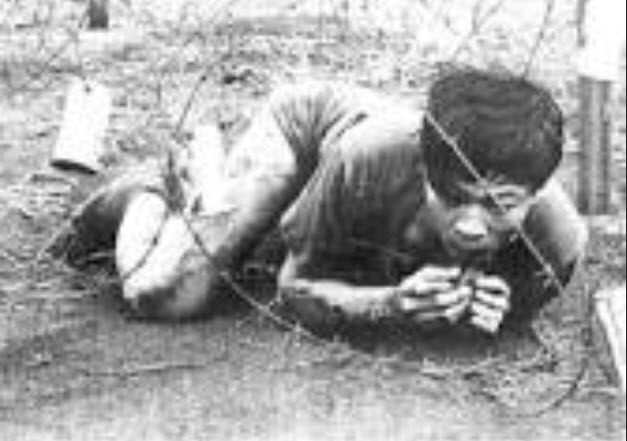
Approaching from the southwest, the infiltrators cut four big gaps through the concertina, two holes on each side of the road where it left the perimeter.
They repeated the procedure 50 meters farther on, through the second barrier, although the wire there was in such a state of disrepair that many sappers simply walked across the rusty, breaking steel strands. Another 30 yards and they came to the final concertina barrier.
Rather than risk having the snip of cutters heard by some alert sentry, the infiltrators simply spread a gap through the wire, tying it open with bamboo strips.
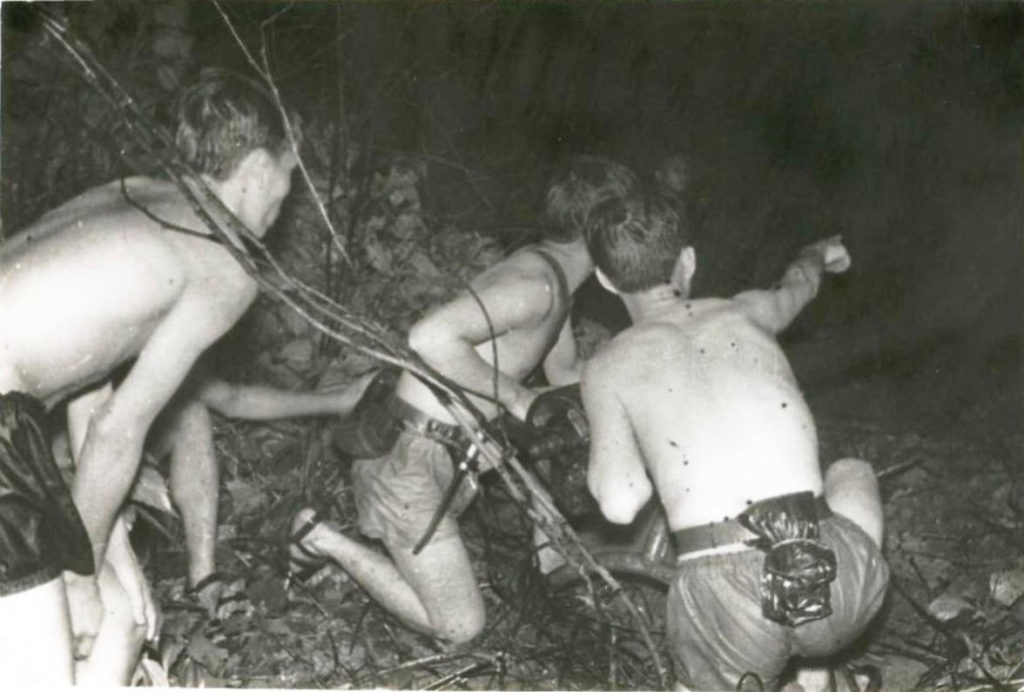
The sappers were well-rehearsed. Splitting up into three- and six-man squads in the zone between the inner wire barrier and the bunkers facing southwest, the assault teams waited until 0230 hours.
Then their supporting mortars opened with accurate fire on the TOC and CP on the base’s southeast side, and on the remaining U.S. mortar and artillery positions in the northwest area.
All Hell breaks out.
A card game in the radio room was just breaking up when the first rounds hit.
The explosion hurled Wise onto his back, knocked off his glasses, broke his left arm and sprayed the front of his body head-to-foot with fragments. Using his right arm to drag himself into his hooch, he shook awake his roommate, Pfc Peter Detlef, and then hid behind his reel-to-reel tape deck as he seated himself on the floor and tried to cover the door with his M-16.
When Detlef, still half asleep, tried to go through the door, another explosion blasted the door off its frame and on top of him.
As the VC had anticipated, most defenders were immobilized by confusion. One radioman never bothered to crank up his radio to report the situation, but simply rolled off his cot onto his hut’s dirt floor and hid beneath his mattress until the shooting stopped.
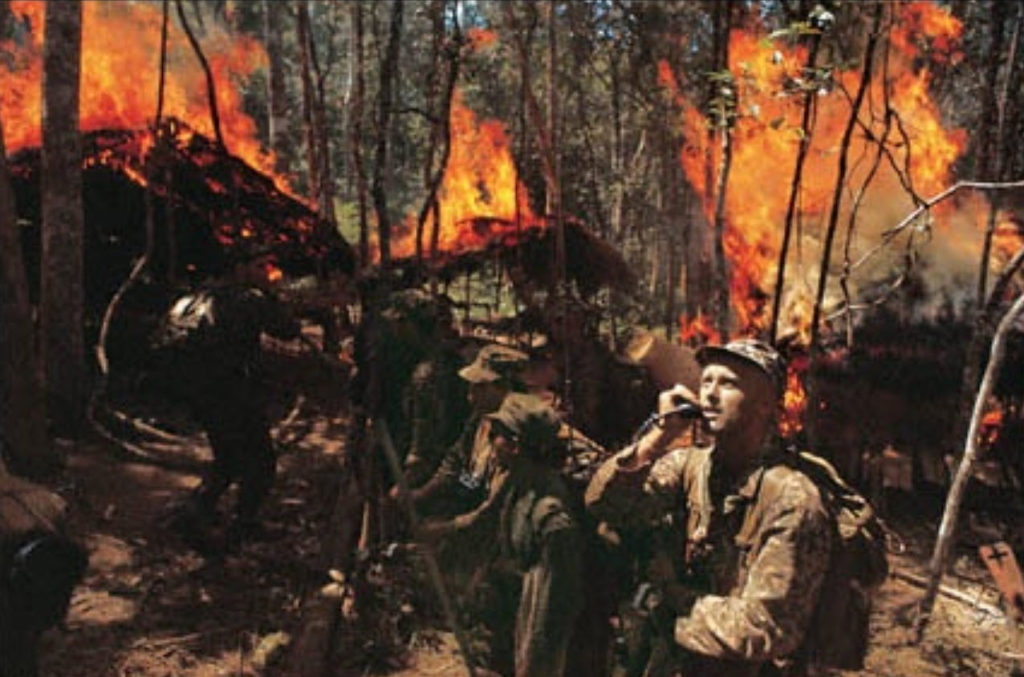
Inside the TOC, Spc. 4 Stephen Gutosky grabbed his radio mike and reported: ‘Be advised, we are taking incoming at this time! Stand by and I’ll see if I can get a direction on it!’
When he realized with a start that he was still inside the TOC, he shouted into his microphone: ‘I can’t get outside to see where it’s coming from! Just fire all the counter mortars and counter rockets you got ASAP!’
By that point the south end of the TOC was burning from the inside after a satchel charge set off a case of white phosphorus grenades. Yet Doyle still refused to abandon his position. After ordering Gutosky to radio for helicopter gunships and illumination, the wounded colonel said, ‘I’m going out to see what’s going on!’
Doyle did not realize how badly he was hurt. He was almost deaf and blind from tear gas, powder burns and explosion concussions. The shrapnel wounds in his arms and legs would take months to heal. Nonetheless he made it to the top of the exit steps, raised his M-16 and started to aim at a couple of infiltrators outside the bunker — but a third, unseen enemy soldier threw a grenade at him. It landed at his feet and exploded as he turned to head back inside, blowing him down the stairs.
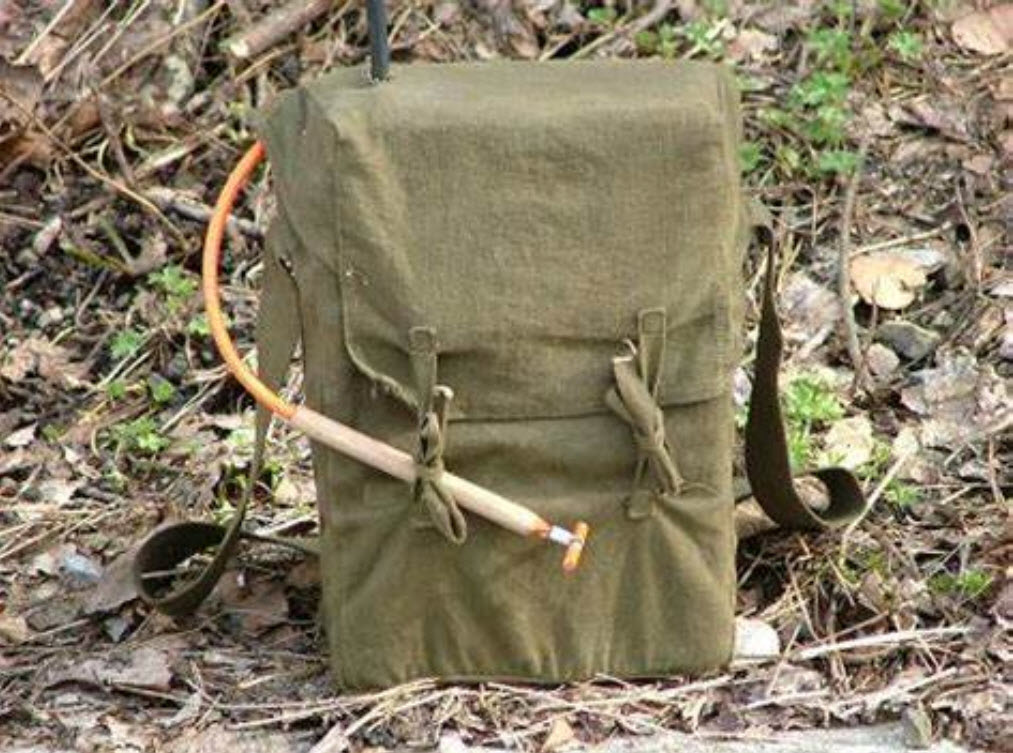
The entire TOC was now burning. Lieutenant Edward McKay, the TOC night duty officer, started to panic in the ovenlike bunker. ‘We gotta get outta here!’ screamed McKay.
‘Not yet!’ hollered Doyle.
‘We’re all going to die!’ sobbed McKay.
Summoning his last element of strength, Doyle slapped the hysterical junior officer hard across the face and snarled, ‘Shut up, lieutenant!’
It was now 0251, and radio telephone operator (RTO) David Tarnay managed to raise LZ Mildred.

Spilberg heard Tarnay shouting into his microphone, he bounded back inside the blazing TOC. Grabbing a handset, he shouted to Lieutenant Thomas Schmitz at LZ Mildred: ‘I want artillery 50 meters out, 360 degrees around our position. On my command be prepared to fire on the firebase!’
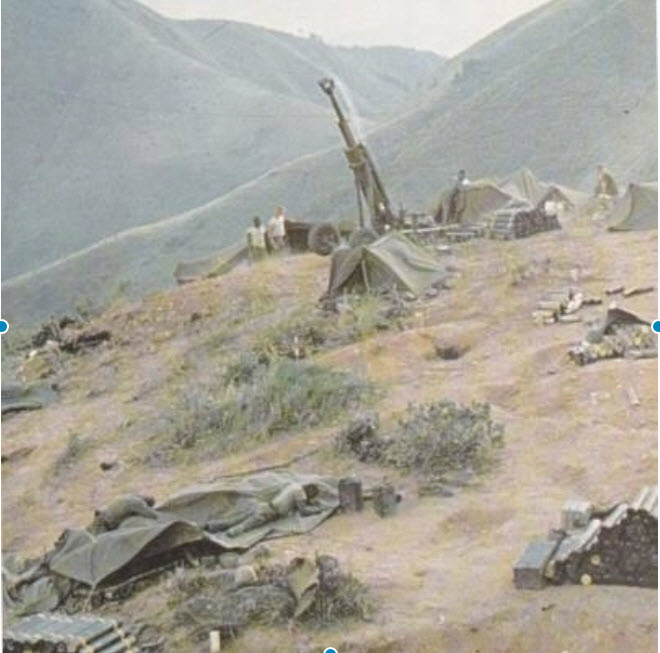
Spilberg realized that calling down fire on his own position was likely the only way to save the surviving Americans there.
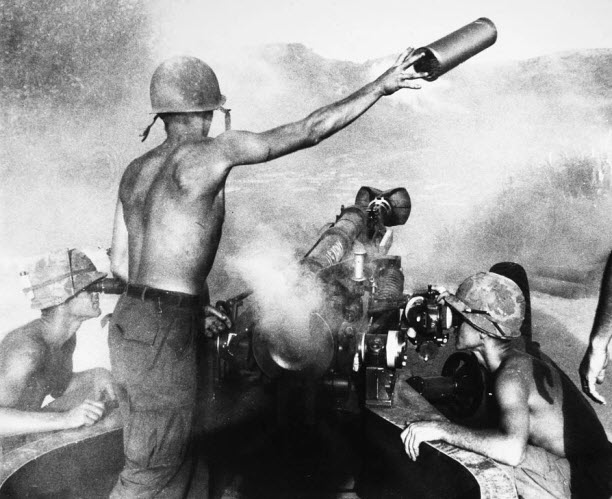
Doyle next grabbed the mike and informed Schmitz they were being forced to evacuate the TOC and would temporarily lose radio contact. With Tarnay and Gutosky carrying all the radio equipment they could, and with the now-incoherent McKay slung over Tarnay’s shoulder, the handful of resolute GIs made their way to the firebase aid station, where Tarnay put McKay on a cot and then tried to get a radio working.

Doyle and Spilberg left the aid station and crossed the compound to the Charlie Company CP. When they arrived they found that it too was an inferno, its sandbagged entrance collapsed.
Throughout Mary Ann, unprepared Americans were shot and blown apart by the VC sappers, who seemed to know precisely where to concentrate their assault.
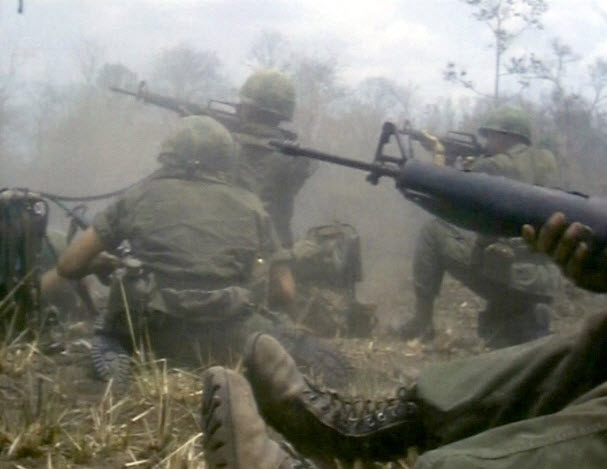
ARVN helped plan the attack.
Later, some survivors would accuse the South Vietnamese of cooperating with the attackers. Specialist 4 Steven Webb was the only U.S. soldier who was with the base’s ARVN contingent throughout the fight. Despite later rumors that ARVN troops had fired on Americans that night, Webb said he never saw it happen.
Nevertheless, suspicion and bitterness lingered. One of Knight’s NCOs, Staff Sgt. John Calhoun, later remarked, ‘It was an inside job.’
Specialist 4 Edward L. Newton concurred. ‘That morning before the attack, an ARVN officer came up to our bunker and asked how we got out of the perimeter,’ he recalled. ‘We asked him why he wanted to know. He said because he and his men wanted to go down there fishing. We thought it was kind of peculiar. We said we did not know for sure.’
The officer, who wore the insignia of a South Vietnamese first lieutenant, persisted in his questioning of the Americans until some of them told him the easiest way in and out was the south end and on the road running past the rifle range to the water point.
Specialist 5 Carl Cullers later claimed: ‘[I saw] an ARVN going behind the rifle range. It was more or less a joke at first. One of the cooks said, `Hey Cullers, there’s an NVA down there,’ and I said, `Quit joking,’ and he said, `Wait, and I’ll point him out to you.’ I knew he was an ARVN by his size. He had gone out beyond the rifle range, and down the slope for about 20 minutes. I took it for granted he had gone down to defecate.’
![Specialist 5 Carl Cullers later claimed: ‘[I saw] an ARVN going behind the rifle range. It was more or less a joke at first. One of the cooks said, `Hey Cullers, there’s an NVA down there,’ and I said, `Quit joking,’ and he said, `Wait, and I’ll point him out to you.’ I knew he was an ARVN by his size. He had gone out beyond the rifle range, and down the slope for about 20 minutes. I took it for granted he had gone down to defecate.’](https://metallicman.com/wp-content/uploads/2020/01/SNAG-X0052.jpg)
Sergeant Andrew Olints of Company D was next to the helipad at dusk on the 27th when ‘an ARVN chopper came out, and fifteen of those little suckers got on,’ as he later reported. ‘They were thrilled to death, jumping on, pushing each other. I didn’t think the thing would take off, it was so overloaded. We had no idea what was coming, but in retrospect it sure looked like they did.’
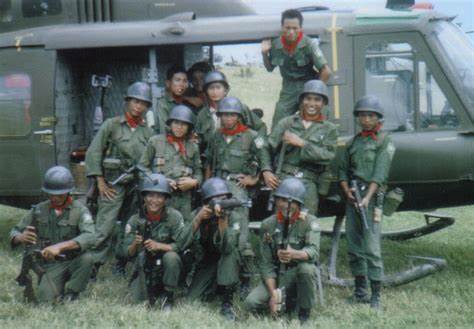
Specialist 4 Gary Noller, an RTO at LZ Mildred, later wrote: ‘I remember an incident where a GI came to the TOC and said that an ARVN was signaling with a flashlight to someone outside the wire.’
He said he went to check it out. ‘[I] did encounter an ARVN with a GI flashlight near the east perimeter wire,’ Noller remembered. ‘I told him not to use it, in English, which he probably didn’t understand, and then reported this to an officer.
The incident was not treated seriously by the officers, but added credence as far as the GIs were concerned that some of the ARVN were not on our side.’
Wholly SHTF!
In one of the most dramatic events of the night, Lieutenant Barry McGee, who had been sleeping atop bunker No. 10 when the attack started, stumbled half asleep into his platoon CP with several of his men just as the enemy targeted the position.
McGee was the leader of C Company’s 3rd Platoon, which manned bunkers Nos. 9 through 13. As he and his men grabbed their weapons and prepared to return outside, two mortar rounds hit the bunker, half demolishing it and dislodging a heavy ceiling beam that fell on the lieutenant, seriously injuring his head.
A medic dressed the wound, and after about 15 minutes the men in the platoon CP noted that the explosions outside seemed to be ending.
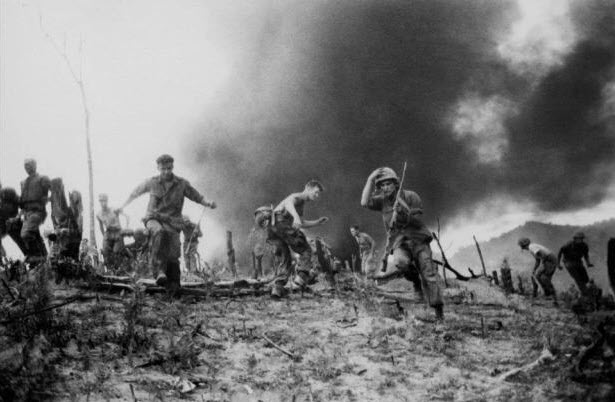
McGee had just lurched to his feet, turned to the door and said, ‘All right, let’s go!’ when a grenade sailed through the door, exploded and blew the medic, Spc. 5 Carl Patton, back into McGee. Realizing he had lost his weapon, McGee grabbed Patton’s M-16 and again headed for the door.
Another satchel charge detonated on the roof, caving it in and killing 22-year-old Sergeant Warren Ritsema when a beam fell on him.
The blast knocked down McGee, who again lost his weapon. He staggered to his feet and stumbled outside, incoherent with pain and frustration.
When the short, stocky, powerfully built and unarmed lieutenant collided with a sapper outside the bunker, McGee wrestled him to the ground and strangled him with his bare hands.
It was quite a feat for somebody already half-dead from a fractured skull. The lieutenant’s corpse was later found atop the VC he had choked lifeless.
Another sapper had shot McGee in the back.
At 0320, Spilberg and Doyle were at the southern end of Mary Ann, believing the attack was almost over. But then, partly obscured by the billowing smoke, another team of sappers started back up the hill, throwing grenades in all directions.
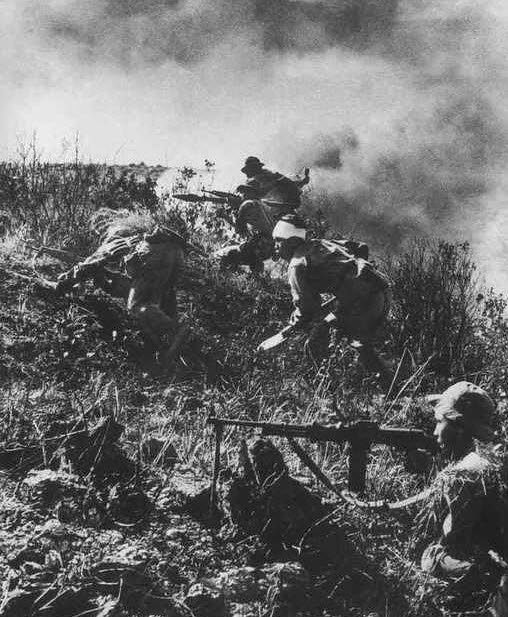
Apparently searching for their own dead and wounded, the VC broke contact and withdrew when the first helicopter gunship finally arrived overhead.

It was commanded by Captain Norman Hayes, Troop D, 1st Squadron, 1st Cavalry. Hayes radioed LZ Mildred that he had arrived at his objective and to lift and shift the artillery fire Spilberg had earlier ordered.
Mildred ceased firing except for illumination rounds.
When Hayes’ searchlight illuminated VC in the wire, they opened up on the gunship with small arms. As Hayes later put it, ‘We engaged, and I know that anything we fired on ceased firing on us.’
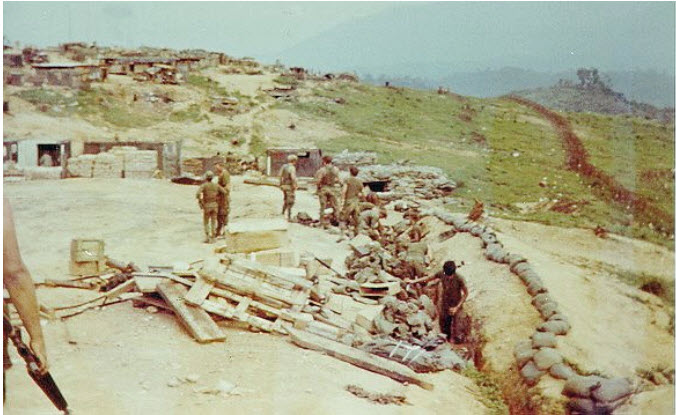
Hayes made repeated passes over the base, dropping grenades and strafing targets of opportunity, despite two of his guns becoming inoperative almost immediately after his arrival on station.
He made repeated radio calls for additional gunships and medevacs, but by the time he ran low on fuel and had to return to Chu Lai, no additional aircraft had arrived. Because of the chaotic state of communications, the brigade and division were under the misconception that Mary Ann had been subjected to nothing more than mortaring.
Hayes actually had time to return to Chu Lai, refuel, reload and repair his guns, and then fly all the way back to Mary Ann, before medical helicopters began arriving.
Colonel Hathaway and Lt. Col. Richard Martin, commander of the 3rd Battalion, 82nd Field Artillery, arrived with the medevacs. Spilberg was almost amused at their reaction to the devastation, later remarking: ‘They were in a state of shock. They had just walked into Auschwitz.’
Despite having a gutful of fragments, Spilberg at first refused to leave the base.
He wanted all his wounded men taken out before him, and when Doyle told him to board a chopper he simply climbed in one door and out the other side.
Not until Hathaway gave him a direct order did Spilberg finally leave. He was later awarded the Silver Star.Spilberg also recommended Doyle for a Silver Star, but Hathaway refused to endorse the nomination.
He later said he was tortured by the decision, explaining, ‘I just felt that although he had conducted himself with a certain amount of valor, the situation had occurred because of shortcomings on his part.’
At 1600 the next day, the enemy hit the ruins of Mary Ann with 12.7mm machine gun fire, sweeping the enclosure from a ridgeline to the north.
One GI was wounded in the attack.Fifteen dead sappers were collected from within the base, although blood trails indicated several dead and wounded had been dragged back into the jungle.
After the debacle, however, the South Vietnamese decided they did not want to garrison Mary Ann. The FSB was closed and abandoned on April 24, 1971.
General Creighton Abrams, commander of the U.S. Military Assistance Command, Vietnam, held 23rd Infantry Division commander Maj. Gen. James Baldwin responsible for the disaster, and relieved him of his command. The 23rd ID’s name had been eternally tarnished three years earlier because of the My Lai massacre.
Many in the U.S. Army suspected that Baldwin would not have been fired had he been in any other division.
What happened at Mary Ann was a failure at the most basic level of soldiering. The Company had been warned by its South Vietnamese Kit Carson scout that it had been infiltrated by enemy spies posing as ARVN (Army of the Republic of Vietnam) soldiers.

All electronic sensors had been pulled from the perimeter the day before the attack.
Not a single ARVN soldier came to the aid of the Americans, and the enemy left their Vietnamese brothers alone throughout the assault.
The Americans also took fire from the ARVN part of the compound.
Mary Ann was a classic case of intelligence failure. The clues, quite simply, were never added up.
Fire Support Base Mary Ann was scheduled to be turned over to the ARVN in a matter of days. Nobody had bothered to tell the soldiers who died defending it.
Both Hathaway and Doyle received career-ending formal reprimands. Being blamed for the Mary Ann tragedy was a crushing blow to Doyle. He and his wife divorced soon after his release from the hospital.
He remarried in April 1972 — just two weeks before receiving his letter of reprimand from Army chief of staff General William Westmoreland. Doyle cut his honeymoon short in order to make a personal but futile appeal to Westmoreland.
Doyle developed a severe drinking problem, and he died of a heart attack in March 1984. He was 52. Hathaway and Spilberg were among those following his caisson to the gravesite at Arlington National Cemetery. While delivering the funeral oration, Spilberg spoke for many when he referred to Doyle as ‘the last casualty of Firebase Mary Ann.’
This article was written by Kelly Bell and originally published in the April 2006 issue of Vietnam Magazine. Pictures provided from the internet and placed into the story line by John Podlaski
In memory of those who lost their lives that night:
Capt. Richard V. Knight, Company C, 1-46th Infantry
1st Lt. John L. Hogan, Battery B, 1-14th FA, attached to 1-46th Infantry
1st Lt. C. Barry McGee, Company C, 1-46th Infantry
S.Sgt. Terry H. Price, Company C, 1-46th Infantry
Sgt. Michael L. Crossley, Company C, 1-46th Infantry
Sgt. Warren P. Ritsema, Company C, 1-46th Infantry
Sgt. Ronald James Becksted, Company C, 1-46th Infantry
Sp4 Victor R. Bennett, Company C, 1-46th Infantry
Sp4 Richard J. Boehm, Company C, 1-46th Infantry
Sp4 Richard R.. Carson, Company C, 1-46th Infantry
Sp4 James E. Edgemon, Company C, 1-46th Infantry
Sp4 Myron B. Johnson, Company C, 1-46th Infantry
Sp4 Robert J. Schumacher, Company C, 1-46th Infantry
Sp4 Donald M. Stotts, Company C, 1-46th Infantry
Pfc. Druey L. Hatfield, Company C, 1-46th Infantry
Pfc. Michael S. Holloway, Company C, 1-46th Infantry
Pfc. Laymon Palmer, Company C, 1-46th Infantry
Pfc. Dallas D. Robinson, Company C, 1-46th Infantry
Pfc. Paul A. Sheer, Company C, 1-46th Infantry
Pvt. Steven D. Plath, Company C, 1-46th Infantry
Pvt. Clark V. Shawnee, Company C, 1-46th Infantry
Sp5 Kyle S. Hamilton, HHC, 1-46th Infantry
Pfc. Wilbert S. Dupree, HHC, 1-46th Infantry
Sgt. Michael J. Bayne, Company A, 1-46th Infantry
Sp4 Larry W. McKee, Company A, 1-46th Infantry
Sp4 Larry D. Austin, Battery C, 3-16th FA
Sp4 Clifford W. Corr, Battery C, 3-16th FA
Sp4 Roger D. Whirlow, Battery C, 3-16th FA
Pfc. Donald C. Bennett, Battery C, 3-16th FA
Pfc. William W. Kirkpatrick, Battery C, 3-16th FA
Conclusion
War is a nasty business. We, especially today us contemporaneous Americans, are accustomed to “winning wars” and “winning battles”. Every defeat is turned into a victory without any opportunity to learn from our mistakes.
I argue that it is well past the time to learn from our mistakes.
Vietnam was a “third world shit hole”, and we lost. Image what damage could be expected were America’s leadership to pick a fight with the wrong foe; a nation that does NOT play, and who has the latest in military technology and weapons.
Learn from our past and vow never to repeat those mistakes.
If you enjoyed this post, please feel free to visit other posts in a similar vein. Here…
SHTF ArticlesArticles & Links
You’ll not find any big banners or popups here talking about cookies and privacy notices. There are no ads on this site (aside from the hosting ads – a necessary evil). Functionally and fundamentally, I just don’t make money off of this blog. It is NOT monetized. Finally, I don’t track you because I just don’t care to.
- You can start reading the articles by going HERE.
- You can visit the Index Page HERE to explore by article subject.
- You can also ask the author some questions. You can go HERE to find out how to go about this.
- You can find out more about the author HERE.
- If you have concerns or complaints, you can go HERE.
- If you want to make a donation, you can go HERE.

